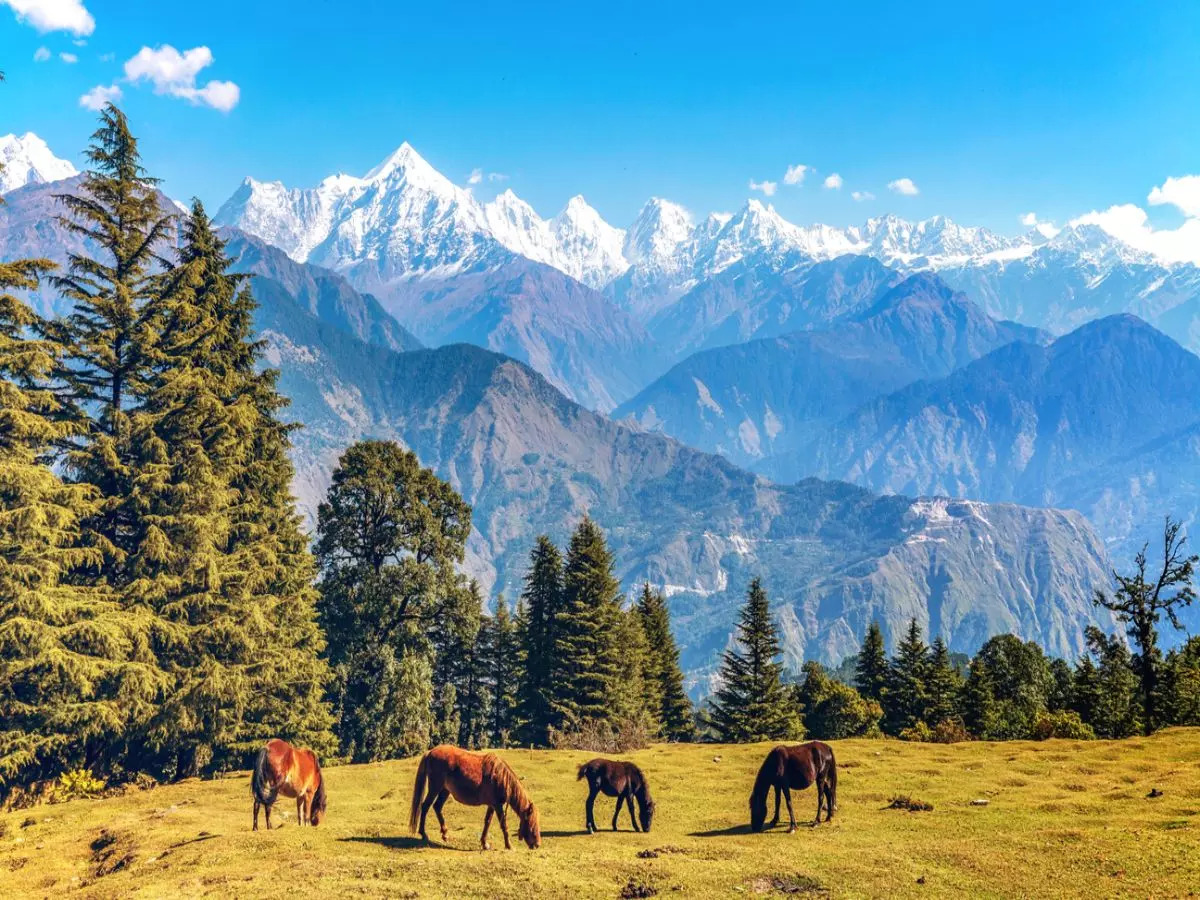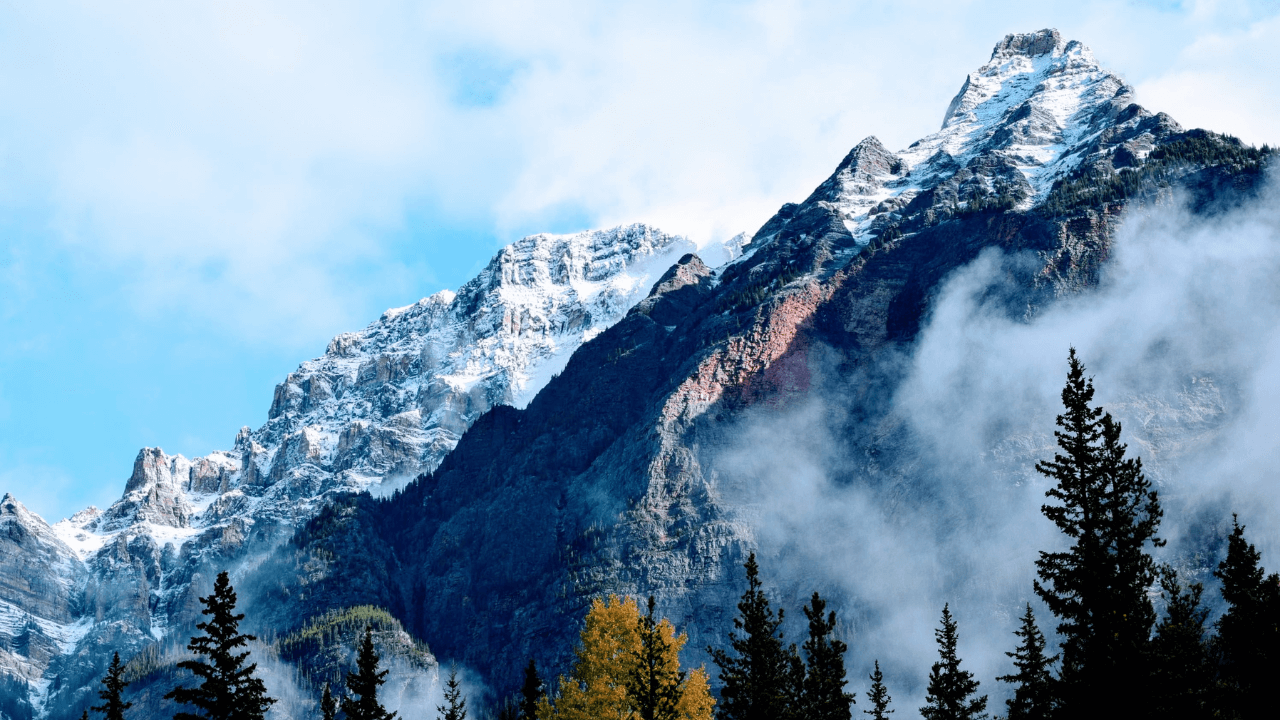Munsiyari Travel Blog – Experience Untouched Beauty & Alpine Adventure
Published on June 23, 2025
Munsyari Tour Package:Tucked into the folds of the Kumaon Himalayas, where the snow listens more than it falls, lies a quiet village that doesn't boast, doesn't clamor — and yet leaves an imprint on every traveler who steps foot into it. This is Munsiyari — not a destination, but an experience.
Far from the crowd and chaos of commercial hill stations, Munsiyari is a realm where the sky speaks in colors, the wind carries ancient secrets, and time walks slower than your thoughts. It’s not just about getting away; it’s about returning — to something deeper, quieter, truer.
A Himalayan Canvas That Moves You
When you arrive in Munsiyari, you don’t just see the mountains — you feel them. The Panchachuli peaks, standing like five divine sisters wrapped in eternal snow, form a dramatic horizon that changes hue with every passing hour. At sunrise, they blush like newlyweds; by noon, they’re stark and bold under the high sun; and by dusk, they retreat into shadows, whispering stories only the wind understands.
Every turn here opens to a new perspective — pine-fringed trails, meandering paths beside frozen streams, terraced fields that have fed generations. It’s the kind of place where the natural world doesn’t decorate your journey — it defines it.

Suggested 7 Days / 6 Nights Itinerary from Delhi (Botanical Garden) to Munsiyari
Day 1: Delhi – Haldwani / Kathgodam (Train + Overnight Stay)
-
Start your journey from Botanical Garden metro station early morning.
-
Take a direct train from Anand Vihar to Kathgodam (Ranikhet Express or Sampark Kranti).
-
Reach Kathgodam by evening and stay overnight at a nearby hotel in Haldwani or Kathgodam.
Day 2: Kathgodam – Munsiyari (via Almora, Bageshwar & Thal)
-
Start early for a 10–12 hour scenic drive covering Almora, Bageshwar, and Thal.
-
Enjoy stops at local dhabas and scenic viewpoints like Chaukori.
-
Reach Munsiyari by late evening and check into a homestay or lodge.
Day 3: Explore Munsiyari Town & Nanda Devi Temple
-
Visit the Nanda Devi Temple, a peaceful location with panoramic views.
-
Stroll through the town, visit local markets, and meet artisans at Darkot Village.
-
Enjoy a traditional Kumaoni dinner and relax.
Day 4: Trek to Khalia Top
-
Embark on the Khalia Top trek (day hike). Start early with a packed lunch.
-
Enjoy 360-degree views of the Panchachuli peaks from the top.
-
Return by late afternoon. Evening free to explore local cafés.
Day 5: Visit Thamri Kund + Birthi Falls Excursion
-
Short forest hike to Thamri Kund, a serene natural lake.
-
After lunch, take a drive to Birthi Falls (approx. 35 km), spend time at the base.
-
Return by evening. Optional bonfire at your stay.
Day 6: Leisure & Local Life Day
-
Explore the local culture and wool weaving at Darkot Village.
-
Visit the Tribal Heritage Museum (if open).
-
Interact with locals, take slow walks, or just sit and absorb the landscape.
Day 7: Munsiyari – Kathgodam – Delhi
-
Start early for the return drive to Kathgodam.
-
Board the evening/night train back to Delhi.
-
Reach Delhi early next morning, full of mountain memories.
(Tip: For those with extra time, the itinerary can be extended to include Milam Glacier base camp or Chaukori overnight.
Treks That Begin Where the Road Ends
Munsiyari is the end of the road — literally. But that’s where the real paths begin. Foot trails once used by Bhotia traders still pulse with the memory of ancient exchanges between India and Tibet.
One such trail leads to Khalia Top, a meadow suspended between forest and sky. The trek is short but potent — a winding journey through whispering pines and oak that opens up into an alpine pasture. From here, the view of the Panchachuli range is both humbling and unforgettable.
Then there’s the Milam Glacier Trek, a multi-day expedition through river valleys and forgotten villages. It’s not just physically demanding — it’s emotionally transformative. You pass shepherd huts, cross swaying wooden bridges, sleep under stars brighter than city lights will ever allow, and eventually arrive at the icy stillness of Milam — where silence and snow have made a pact to never part.
Another gem is Thamri Kund, a small lake surrounded by dense forest, believed to be sacred by locals. Getting there is easy, and the reward is a still pond mirroring the sky — a place that feels more like a meditation than a destination.
Life in a Village That Refuses to Hurry
What makes Munsiyari truly different is its pace. This is a village that hasn't surrendered to the high-speed world. Here, the mornings are slow and smoky, with people sipping tea on wooden porches, wrapped in wool, watching their livestock wander lazily into the fog.
The scent of wood-fired stoves fills the crisp mountain air. Roosters crow not to wake anyone, but as part of the rhythm of life. There's no urgency in Munsiyari — just a quiet commitment to the present moment.
The locals — warm, grounded, deeply connected to their land — live lives of quiet resilience. Many belong to the Bhotia tribe, known for their wool weaving and deep knowledge of the mountains. Walk into Darkot Village, and you’ll see artisans at work, crafting pashmina shawls on age-old looms, each thread carrying generations of wisdom.
Conversations here aren't rushed. People take time to greet each other, to ask about family, to smile without a motive. Elders sit on stone benches warmed by sunlight, exchanging stories from a time when trade routes connected Munsiyari to Tibet. Their tales are not dramatized — just honest slices of a harder, simpler life.
In the evening, as mist crawls through the alleys and shadows stretch across the hills, families gather indoors for warmth, food, and conversation. No television, no screens — just human presence, shared meals, laughter, and memory.
There are no malls here. No cinemas. No nightlife. But somehow, you feel full. Fulfilled, even. Because here, you don’t consume experiences — you absorb them. Every detail — the texture of a handmade blanket, the smoky flavor of lentils cooked over firewood, the echo of a prayer bell — becomes a part of your journey.
And perhaps, this is what makes Munsiyari so remarkable. In a world obsessed with fast, it teaches the beauty of slow. In a world hungry for more, it gently reminds you that you already have enough.
When the Snow Falls, Everything Stops
If you’re lucky enough to visit Munsiyari in winter, you’ll witness a transformation that no photograph can capture. The village doesn't just get covered in snow — it is reborn in stillness. Roads that once bustled with barefoot children and slow-moving scooters fall silent under layers of soft white.
The rooftops, fields, and deodar trees wear the same blanket — seamless, white, and weightless. Smoke curls out of chimneys like delicate brushstrokes on a canvas that’s been wiped clean. The air turns into crystal, sharp yet healing, and the entire world seems to whisper instead of speak.
The snow here doesn't just fall — it settles into silence. It muffles the sound of footsteps, calms even the dogs, and slows down every movement, like nature hitting pause. In that stillness, something beautiful happens: you begin to slow down too. You stop checking your phone. You notice the texture of breath on a windowpane. You hear your heartbeat when the world holds its own.
Power might cut off. Signals might disappear. But inside the wooden cottages, there's warmth — not just from the fire, but from connection. Strangers become family over shared meals. Stories are exchanged like old currency. You sleep not to escape the day, but to preserve its peace.
Snow changes the landscape — yes — but more than that, it changes the rhythm of life. And in Munsiyari, winter becomes not just a season but a sacred intermission — an invitation to pause, reflect, and remember what it means to simply be.
The Kind of Travel That Changes You
We often travel to tick off boxes — to capture selfies, chase itineraries, and collect experiences like souvenirs. But Munsiyari doesn’t fit in a checklist. It doesn’t try to entertain you. It simply exists — raw, serene, and untouched.
And that’s its greatest magic. You come here expecting mountains, and you leave with something else — a strange sense of clarity, a deep breath you didn’t know you were holding, a reminder that the best parts of life aren’t loud — they’re quiet.
Munsiyari changes you in subtle, irreversible ways. It teaches you how to slow down without feeling behind, how to listen to silence and still feel full. It strips away distractions and invites you to just be — to observe, to reflect, to connect.
You begin to notice things: the way mist lingers like memory in the valleys, how each prayer flag flutters in its own rhythm, how the elderly nod instead of speaking — and somehow, it says more.
Your priorities shift. You realize you don't need Wi-Fi to feel connected, or noise to feel alive. The view from a simple hilltop here is more powerful than any screen, and the echo of your thoughts in a quiet trail more honest than any podcast or playlist.
It’s in the sound of a distant stream. The smile of an old woman selling walnuts. The prayer flags fluttering outside a small temple. The silence between two peaks. It’s travel not for escape, but for awakening — the kind that nudges you gently toward who you truly are.
Travel Tips for First-Time Visitors
-
Planning your first trip to Munsiyari? Here are some essential insights to help you make the most of your Himalayan escape:
-
Best Time to Visit: March to June brings crisp air, blooming rhododendrons, and ideal trekking weather. If you're chasing snowfall, aim for late October to early December, when the town wears its quietest and whitest attire.
-
How to Reach: The journey to Munsiyari is long but rewarding. The nearest major railway station is Kathgodam, from where you can hire a taxi or catch a shared vehicle via Almora, Bageshwar, and Thal. Be prepared for a drive of over 10 hours — with landscapes that constantly change and surprise.
-
With a little planning and a lot of curiosity, your first journey to Munsiyari will leave you not just enriched — but transformed.
-
Local Transport: Public buses are available but infrequent. Private taxis or shared jeeps are more reliable. Once in Munsiyari, most exploration is on foot — pack good shoes!
-
Where to Stay: For an authentic experience, opt for locally-run homestays, eco-lodges, or guesthouses. Not only are they cozy and warm, but they also give you a direct connection to local hospitality and homemade food.
-
What to Pack: Weather can change quickly in the mountains. Bring layers, including thermals, a down jacket, gloves, and a rain poncho. Don’t forget sunscreen, lip balm, and a torch.
-
Don’t Miss:
-
Birthi Falls: A roaring waterfall about 30 km before Munsiyari — perfect for a break and photos.
-
Darkot Village: A cultural gem where time stands still and artisans weave history into wool.
-
Thamri Kund: A peaceful lake trek offering spiritual calm and natural beauty.
-
Stargazing Nights: With minimal light pollution, Munsiyari’s sky is a planetarium. Bring a blanket and gaze upward.
-
-
Connectivity: Mobile signals can be weak or patchy. BSNL and Jio have the best coverage. Most stays offer Wi-Fi but don’t depend on it — embrace the digital detox.
-
Health Tips: Carry basic medicines and stay hydrated. The altitude may affect some travelers initially. Acclimatize slowly and avoid strenuous activity on your first day.
-
Responsible Travel: Respect local customs. Avoid littering. Support local businesses. Munsiyari thrives on small, meaningful gestures.


.jpg)
